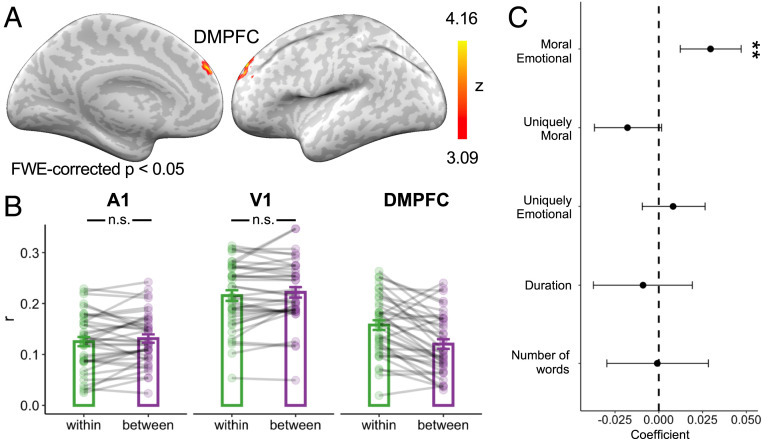Fig. 3.
DMPFC time course diverges between conservatives and liberals. (A) Within-group ISC was higher than between-group ISC in the left DMPFC. P values were computed by comparing the observed ISC difference to a null distribution generated using a nonparametric permutation procedure (Materials and Methods). We imposed an FWE cluster-correction threshold of P < 0.05 with a cluster-forming threshold of P < 0.001. An unthresholded map is available at https://neurovault.org/collections/PKFXOYLX/images/319402/. (B) Within-group ISC was not significantly different from between-group ISC in the primary auditory (A1: t [37] = −1.26, P = 0.215) and visual cortex (V1: t [37] = −1.55, P = 0.130). For comparison, we display the ISC values for the DMPFC, but no additional inferences should be drawn based on these plots as the statistical contrast used to identify the DMPFC predetermined a significant difference. Data points denote individual participants, and error-bars denote between-participant SEM. (C) The use of moral-emotional language was associated with greater neural polarization in the DMPFC. Data points indicate regression coefficients with 95% confidence intervals estimated from a linear mixed-effects model. **Holm–Bonferroni-adjusted: P < 0.01. n.s.: not significant.

